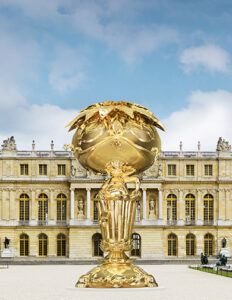 >Hello, this is Masahiko Yokota.
>Hello, this is Masahiko Yokota.
Even Sapporo has now become unbearably hot—something unimaginable just ten years ago.
In fact, earlier this month, I replaced my old car, which had deteriorated with rust and age.
Although it is a used car, I purchased—on the recommendation of a Toyota dealer—a Yaris 1500cc 4WD with only 6,000 km of mileage.
To my surprise, I was able to buy it at an incredibly reasonable price.
Moreover, it came fully equipped with all the options.
This has been the best-selling passenger car in Japan over the past five years, and it is also the world’s most fuel-efficient gasoline-powered car.
Because of its compact size, it consumes only about half the resources compared to larger vehicles like the Alphard.
But the Earth is already half-destroyed.
From now on, heat waves and natural disasters will accelerate exponentially.
I believe we are no longer living in an era when one can say, “I have money, so I can buy and drive a big car like the Alphard.”
Some may think that hybrid cars are environmentally friendly, but that is a grave misunderstanding.
The production of a single car consumes gasoline equivalent to driving 100,000 km.
It also uses massive amounts of natural resources such as nickel and iron.
The lithium-ion batteries of hybrid cars, in particular, require the extraction of scarce lithium. This involves pumping up enormous amounts of groundwater, devastating local communities, and driving children into poverty.
Furthermore, manufacturing these batteries consumes fossil fuels equivalent to driving 78,000 km.
Thus, when compared by total gasoline consumption, a hybrid only surpasses a gasoline-powered car after it has already been driven 78,000 km.
A family camping trip in an Alphard may sound joyful.
But the gift left for children in the future will be nothing less than “a catastrophically ruined planet.”
Are we really willing to summon into reality the world of “Nausicaä of the Valley of the Wind (風の谷のナウシカ)”?
The Yaris I purchased this time feels almost as if God prepared it for me, saying: “Since you need a car, this is the one you should drive.”
Art is not a mere object—it is something that enriches the heart.
Just as Kandinsky detested materialism and spent his life pursuing “The Spiritual in Art”, I would like everyone to reconsider the values of “money,” “things,” and “the heart.”
Here is today’s latest work
The title is “In Canary Islands (カナリア諸島にて)”.
The size and materials are the same as always: soft pastel on Mermaid paper.
Dimensions: 110cm × 84cm.
Those who know the title will recognize it right away.
It is the song included in “A Long Vacation”, the breakthrough album of Eiichi Ohtaki (大瀧詠一).
In this album, Eiichi Ohtaki (大瀧詠一) composed the music, while Takashi Matsumoto (松本隆) wrote all the lyrics.
At first glance, this painting may look like a typical tropical resort beach scene, but it was not created in such a casual mood.
First of all, for those unfamiliar with the song, I encourage you to listen to the lyrics.
Then, please look at this work again.
It may seem like a simple landscape painting in style, but in fact, it is not.
This is a work in which I fully applied the “physical laws of translating music into painting,” which I consistently incorporate in my art.
I hope you will listen to the song many times, gaze at the painting, compare them, and share your impressions with me.
◆Please see the Japanese lyrics and the English translation of “In Canary Islands (カナリヤ諸島にて)” here.














